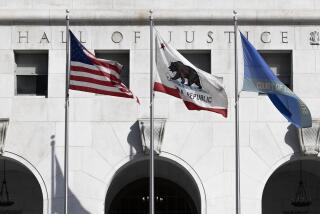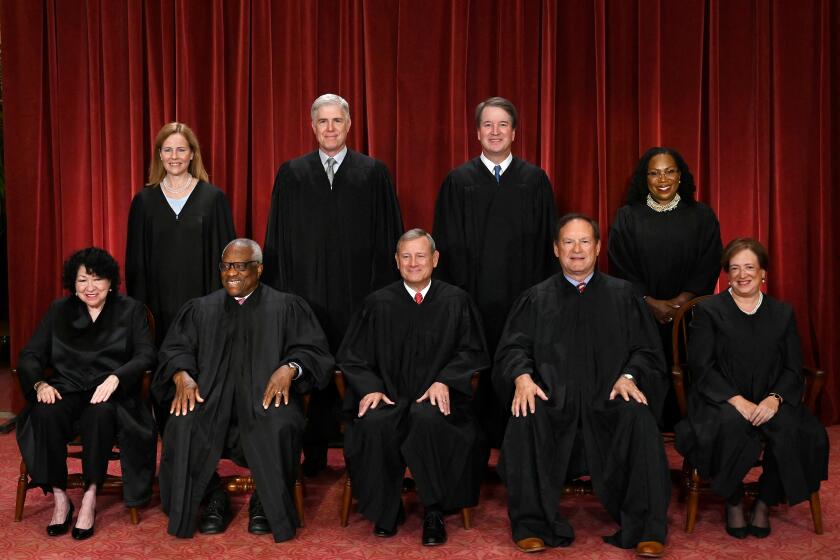Courtroom Camera Plan Called Compromise
- Share via
SACRAMENTO — The chairman of a state task force that recommended a partial ban on cameras in the courtroom described the proposal Friday as a “compromise” intended to appease the news media and judges who favor ejecting cameras altogether in the wake of the O.J. Simpson trial.
San Diego Court of Appeal Justice Richard D. Huffman, who chaired the task force of the California Judicial Council, noted that 55% of judges polled favored a total ban. The council, the policy-making arm of the courts, received the proposal at a meeting Friday in Sacramento and will vote on it in May after receiving public comment.
The task force recommended that electronic coverage and still photography be barred from all pretrial criminal proceedings. The proposal also would prohibit electronic coverage of portions of trials in which the jury is not present, prior to verdicts, and the filming or photographing of courtroom spectators or underage witnesses.
Although televised coverage of trials would continue under the plan, judges would be instructed to consider a variety of criteria before allowing cameras.
At least in the short run, Huffman told the Judicial Council, “there will be far fewer [televised trials] in California.”
California Supreme Court Justice Ronald George, who is expected to be named chairman of the Judicial Council in the next several weeks, declined to speculate how council members will vote, but noted that public comment probably will play a significant role.
*
Representatives of newspapers and several broadcasters complained in interviews that the proposal was an overreaction to the Simpson trial, which was televised. Critics, including Gov. Pete Wilson, blamed the length of the Simpson trial in part on the presence of cameras and called for ousting them altogether.
Wilson called the task force’s proposal “a step in the right direction,” but held firm to his support for total prohibition.
Gene Erbin, a lawyer representing CNN, NBC, CBS and ABC, predicted that the Judicial Council will reject the elimination of electronic coverage of pretrial criminal proceedings because most criminal matters are decided before trial. Television frequently covers arraignments and preliminary hearings.
“They are saying the criminal justice system is off limits,” Erbin said.
But Terry Francke, executive director of the California First Amendment Coalition, an alliance of journalists, said he feared that the council would adopt a “good deal” of the proposal, which he described as “very bad.”
*
The proposal does not require judges to hold a hearing on media requests to televise a trial, a point that some members of the Judicial Council questioned Huffman about at the meeting. If the proposal is accepted, the news media would not be able to appeal a ruling against cameras.
“It leaves judges unaccountable for what they do decide, utterly unaccountable,” Francke said.
George, who chaired the council meeting in the absence of Chief Justice Malcolm Lucas, said he believed members probably would be concerned about limiting judicial discretion. Judges now have wide authority to permit cameras.
“Judges traditionally resist any effort to control their discretion in the courtroom,” George said.
Although 55% of California judges polled favored a total ban, only 35% of those who had experienced cameras in their courtrooms agreed and 96% said cameras had not affected the outcomes of the trials they oversaw. The executive board of the California Judges Assn. rejected by a two-vote margin a total ban on cameras.
Steven Brill, chief executive officer and founder of Court TV, seemed more relieved than disappointed by the proposal. In an interview, he said the restrictions would not affect Court TV, which broadcasts only a small percentage of its trials from California and rarely covers pretrial proceedings.
More to Read
Get the L.A. Times Politics newsletter
Deeply reported insights into legislation, politics and policy from Sacramento, Washington and beyond. In your inbox twice per week.
You may occasionally receive promotional content from the Los Angeles Times.










